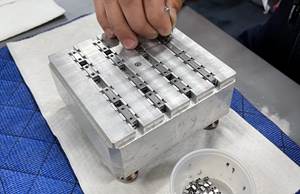Energy Saving Factory Automation Equipment and the Environment
The application of energy efficient motor systems can greatly reduce the overall environmental impact and cost to operate this equipment. Advancements in electric motor design and the associated drive system in modern automation equipment can be extremely energy efficient. Much of the time the most energy efficient machine will also have the highest performance but there is normally an upfront cost associated with the performance and efficiency. That added cost related with selecting energy efficient equipment may be easily returned as lowered energy costs, high performance and reliability.
Energy saving designs:
Electric motor driven equipment account for 64 percent* of the electricity consumed in the U.S. industrial sector.These systems consume 290 billion kWh per year*. The energy cost needed to operate machinery throughout its useful life can easily exceed the original equipment cost. The application of energy efficient motor systems can greatly reduce the overall environmental impact and cost to operate this equipment.
Reducing the energy consumption of electric motors is broken into two categories. Direct energy consumption, which is the energy consumed while performing work, and indirect consumption, the fixed energy consumed regardless of the operational state. Reducing the direct energy consumption requires enhancing the system efficiency, while reduction in indirect usage requires reductions in the cycle, ancillary and latency times.
Direct reduction of energy by improving the system efficiency
- Use of high efficiency synchronous motors
- Power source regeneration
- Power loss reduction by latest switching devices
- Spindle motor temperature rise reduction by maximum efficiency control
- Iron loss reduction of motor by higher frequency of PWM
Indirect reduction of energy consumption by shortening the operation
- Reduction of cycle time by improved acceleration
- Servo – by using rare earth magnets and optimal core design
- Spindle – using high speed PWM control
- Reduction of cycle time by reduced path error allowing higher feed rates
Reduction in direct energy consumption:
Energy efficient electric motor systems Direct energy consumption is the energy consumed during the production cycle. It is the energy needed to do work. Improvements in this area require improvements to the drive systems and machinery selected. In industrial machines the selection of energy saving equipment is typically done during the design phase but in many cases can be retrofitted later onto aging machinery.
One of the most direct ways to reduce energy consumption is to only run motors while the operation is in cycle. Industrial machines using hydraulics or mechanical systems driven by induction motors require stored energy to assist them in performing the work. Since these systems cannot switch on and off quickly and are not easily controlled, they are forced to remain on often at constant speed. The large power output of a synchronous motor allows for the motor to be idle when not in process significantly reducing the power consumption. Replacing inefficient induction motors or hydraulic systems with modern permanent magnet synchronous motors is often the first step.
Implementation of power source regeneration is another excellent means of reducing the power consumption of an electric motor system. During deceleration of an electric motor it will act as generator and energy is put back into the system. In a conventional system that energy is sent to a discharge resistor. A discharge resistor dumps that electrical energy in the form of heat. That waste heat is non-recoverable. By contrast power source regeneration returns electricity to the supply line to be used by other equipment. The electrical energy is recovered and waste heat is greatly reduced.
Power source regeneration requires a drive system with an intelligent power module that can sense the flow of current and switch accordingly. When used the effects are significant. Implementing a servo driven system utilizing drive amplifiers with power source regeneration can see savings of 30% to 40% in electrical power consumption.
Pulse width modulated (PWM) amplifiers provide an excellent control method for electric motors in automation equipment. Rapid acceleration with precise speed and current control is possible but there are always switching losses when using a PWM drive system. These losses translate into waste heat generation. Using the latest generation of power devices will increase controllability and reduce the heat loss. Reduction in heat loss directly equates to electrical energy savings.
Having drive amplifiers and software features matched to the motors and mechanical system selected also contribute to the direct reduction in electrical energy. When utilizing an induction motor an advanced control system can optimize the firing angles so that the optimum torque is produced for a given current. Matching the current contributing of torque and magnetizing will lower heat losses within the motor but requires dynamic control. Using fast switching transistors and an increased PWM rate will lower iron losses in both permanent magnet and induction motors. Reduction in heat and other losses within the motors by using the latest power devices and control systems positively contribute to increased performance and reduced energy consumption.
Reduction in indirect energy consumption:
Decreased cycle times lower energy usage Indirect consumption is the often overlooked energy costs associated with the lost of production. Optimizing cycle times by improving the acceleration and increasing the movement rates will result in increased productivity but will also reduce the energy consumed. Reducing the time required for a motor to accelerate can provide a vast improvement in the process cycle time. In order to reduce the cycle time the motor core shape must be optimized, inertia reduced and motor control matched closely to the needs of the system. Using permanent magnet synchronous motors provide high power density and excellent acceleration. They are best implemented in high torque, high acceleration but lower RPM applications. Optimizing the core shape can involve utilizing rare earth magnets to increase power density while decreasing inertia and an IPM (internal permanent magnet) rotor shaped using finite element design methods to match the needed motor performance.
Fixed energy consumption includes all the fan motors, pumps, lights, etc. involved in the process. Reduction of the fixed value requires reduction in the time or amount of machines needed for production. Reducing the acceleration time and increased per machine speeds fills these requirements.
An induction motor with a wide constant power band can accelerate rapidly to a very high RPM. The design limitations of an induction motor make it difficult to have a low base speed needed for high initial torque and a wide constant power range to continue acceleration to high speeds. Dual winding motors have the capability of producing this very wide power band. The ability to switch windings based on motor needs enables one motor to perform like two. A low speed winding enables very high torque at lower speeds but past the constant output range the power drops off. Switching to the high-speed winding enables the constant power range to be extended to maximum speed, enabling rapid acceleration. The cycle time is reduced by rapid acceleration and often times a smaller motor size is required due to its wide output range enabling further environmental improvements in reduced energy and material usage.
High response for optimized control
Mechanical changes within the motor design provide the potential for improved acceleration and increased speeds but creating a control unit that with capitalize on these improvements is critical. Pulse width modulated drives require advanced switching devices and precision software to efficiently control electric motors. Functions like HRV (High Response Vector), an advanced form of field-oriented control, closes the motor control loops at a very high rate. HRV also adjusts the commands based on the load and RPM of the motor. Quickly and accurately responding to deviation allows the control system to take full advantage of the motors and mechanical system. Acceleration and maximum speeds can be increased without sacrificing accuracy. The net result is higher productivity and a reduction in energy usage.
Electrical Energy reduction, putting it all together:
Significant electrical energy saving is best achieved by improvements in the direct and indirect components simultaneously. Improvements explained throughout this paper can be made that will have impressive operational cost savings and lower the overall environmental impact .
The greatest impact will come from the selection of high efficiency, high performance motors with drive amplifiers that use power source regeneration. Reducing waste heat and inefficiencies within the power components contributes significantly to the direct component of energy savings. Reduction in the cycle time by increase speeds and acceleration lower the indirect component. Used together these improvements to efficiency can be dramatic.
Beyond electricity:
Product development is continually striving to produce high performance CNC and servo systems with the lowest environmental impact possible. The focus of this article has been on the reduction of electrical power consumption. The largest contributor to electrical usage is electric motors. Significant reductions in energy consumption have developed over years using a continuous improvement process. The improvements are categorized and then tracked on a time and generational basis. Categories encompass the direct product improvements such as power savings and size reduction but also the post-disposal load of hazardous chemicals and recycling of parts. The following chart details this ongoing improvement process. A current generation CNC system was compared to the previous system – FS21i-B to FS21i-A from 1999 to March 2005. These incremental improvements are significant in lowering the overall environmental impact of GE Fanuc products.
Environmentally Friendly Products
|
CNC Model: FS21i
Servo Motor:
Spindle Motor:
Amplifiers:
|
Reduction in size and weight |
• Reduced the length of servo motors by 22% • Reduced the length of spindle motors by 30mm • Reduced the weight-to-output ratio of amplifiers by 14% Note: Values are relative to the previous design |
| Reduction in power consumption |
• Reduced power consumption of the NC control unit by 10% • Reduced power consumption of the servo motors & amplifiers by 5% • Reduced power consumption of the spindle motor & amplifiers by 4% Note: Values are relative to the previous design |
|
| Part count reduction | • Reduced parts count by 9% for the LCD mounted type NC control unit • Reduced parts count by 3% for the stand-alone type NC control unit Note: Values are relative to the previous design |
|
| Hazardous chemical reduction |
• Introduced lead-free design for the NC control units • Introduced lead-free paint for the amplifier units • Reduced the lead content of the spindle motor shaft by 19% • Switched to heat shrinkable tubing that does not contain PBBE for servo motors and amplifiers |
|
| Inclusion or recycling information in the manuals |
• Recycling information added to the manuals for servo and spindle motors | |
| Material names on synthetic resin parts |
• Indicated material names on 59% of NC control unit resin parts • Indicated material names on over 80% of servo system resin parts |
Processes to reduce the environmental impact at the time of production of materials are also in place that emphasizes the elimination of waste and recycling of materials. Reduction in size and weight will improve power density | and lower the use of limited raw materials. The reduction of hazardous chemicals, part count and disposal concerns are also addressed, tracked and improved on a continuing basis. Reliability is of the utmost concern, as high reliability reduces the environmental effects of disposal. Hazardous material content is being reduced beyond what is mandated. Documented post-disposal and recycling information is important to the end of life cycle impact.
Conclusion:
Production and the environment do not need to be at odds. Advancements in electric motor design and the associated drive system in modern automation equipment can be extremely energy efficient. Much of the time the most energy efficient machine will also have the highest performance but there is normally an upfront cost associated with the performance and efficiency. That added cost related with selecting energy efficient equipment may be easily returned as lowered energy costs, high performance and reliability. Too often inefficient machines are selected based on purchase price without concern for the lifecycle cost. As energy prices continue to increase the total lifecycle cost of inefficient machinery will come to the surface. Environmental laws continue to strengthen; disposal costs will increase and recycling of the finite resources gain importance. It is time to look closely at equipment efficiency and environmental impact as part of the decision making process.
*Trademark of GE Fanuc Automation All other brands or names are property of their respective holders.
Related Content
CNC Machine Shop Honored for Automation, Machine Monitoring
From cobots to machine monitoring, this Top Shop honoree shows that machining technology is about more than the machine tool.
Read MoreView From My Shop Video 1: A Deep Dive Into Automation with Advance CNC
Advance CNC leverages multiple forms of automation to increase its milling machines' productivity. Learn more in this episode of The View From My Shop.
Read More4 Steps to a Cobot Culture: How Thyssenkrupp Bilstein Has Answered Staffing Shortages With Economical Automation
Safe, economical automation using collaborative robots can transform a manufacturing facility and overcome staffing shortfalls, but it takes additional investment and a systemized approach to automation in order to realize this change.
Read MoreNiche Work If You Can Get It: A CNC Machine Shop Crafts Its Own Destiny
The latest innovations in metalworking aren’t always related to CNC automation or robotics. For Rosenberger North America, a 2022 Top Shops Honoree, it is the company’s niche processes that create the biggest successes.
Read MoreRead Next
The Cut Scene: The Finer Details of Large-Format Machining
Small details and features can have an outsized impact on large parts, such as Barbco’s collapsible utility drill head.
Read More3 Mistakes That Cause CNC Programs to Fail
Despite enhancements to manufacturing technology, there are still issues today that can cause programs to fail. These failures can cause lost time, scrapped parts, damaged machines and even injured operators.
Read More



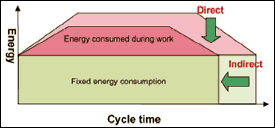



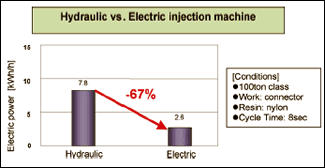
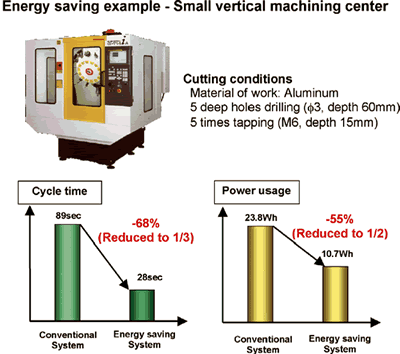


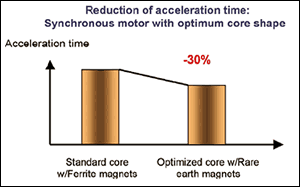
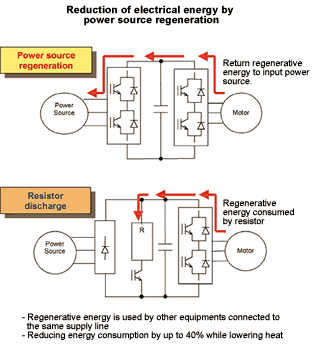

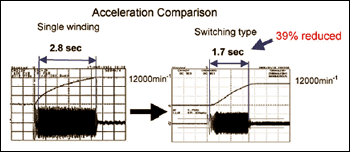








.png;maxWidth=300;quality=90)


.png;maxWidth=300;quality=90)










